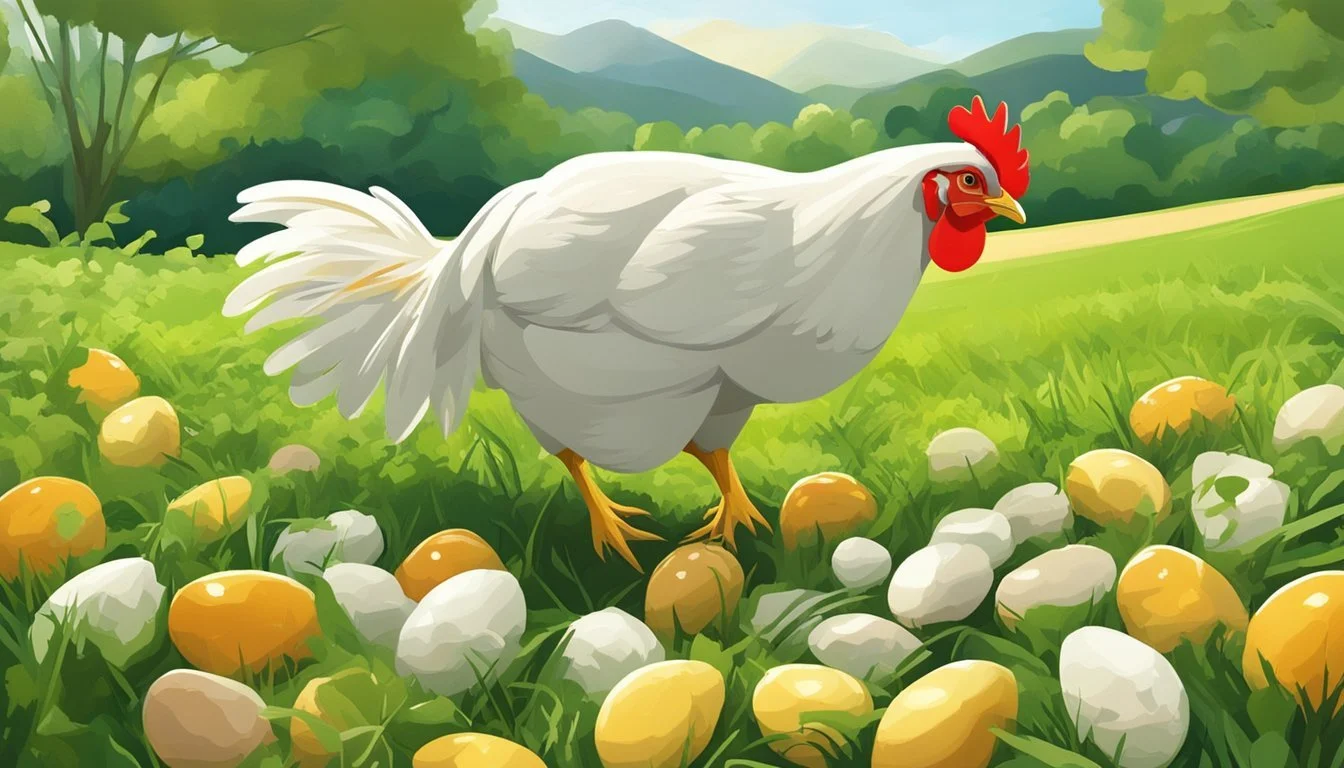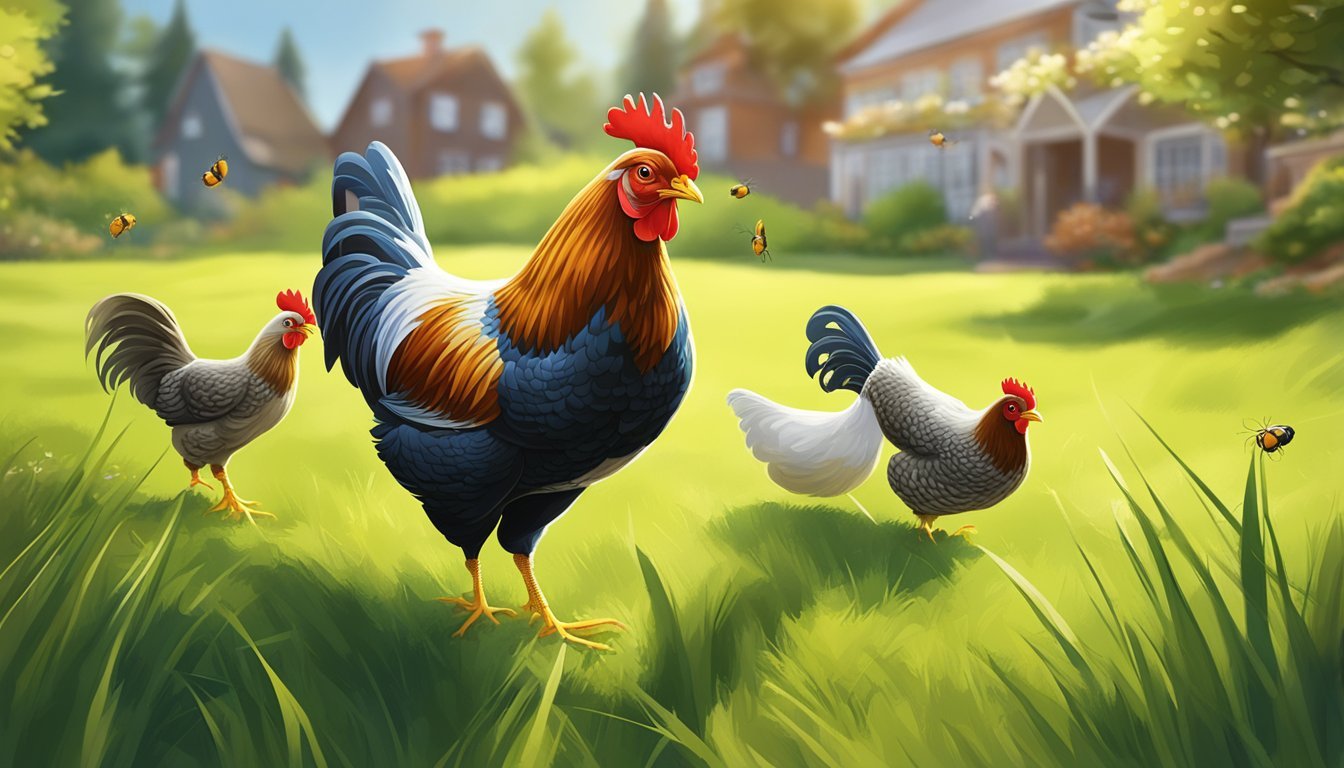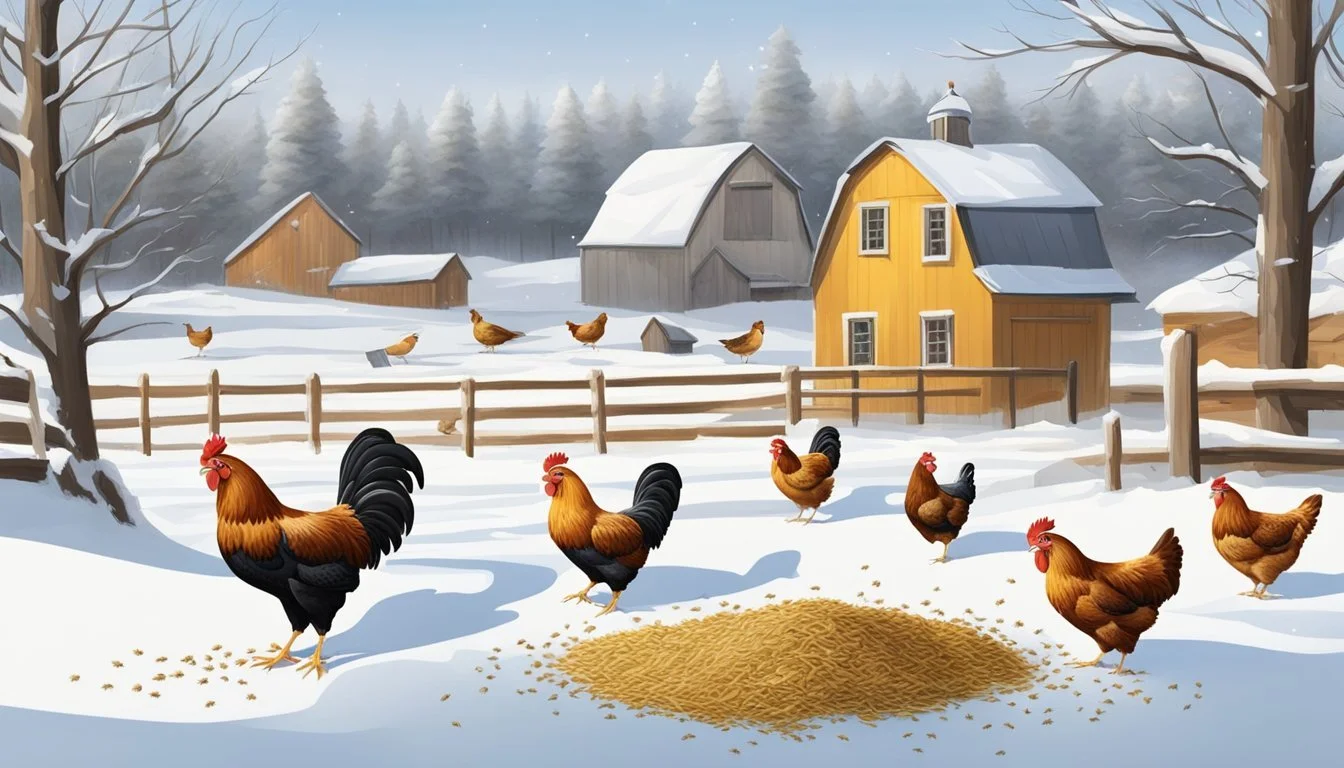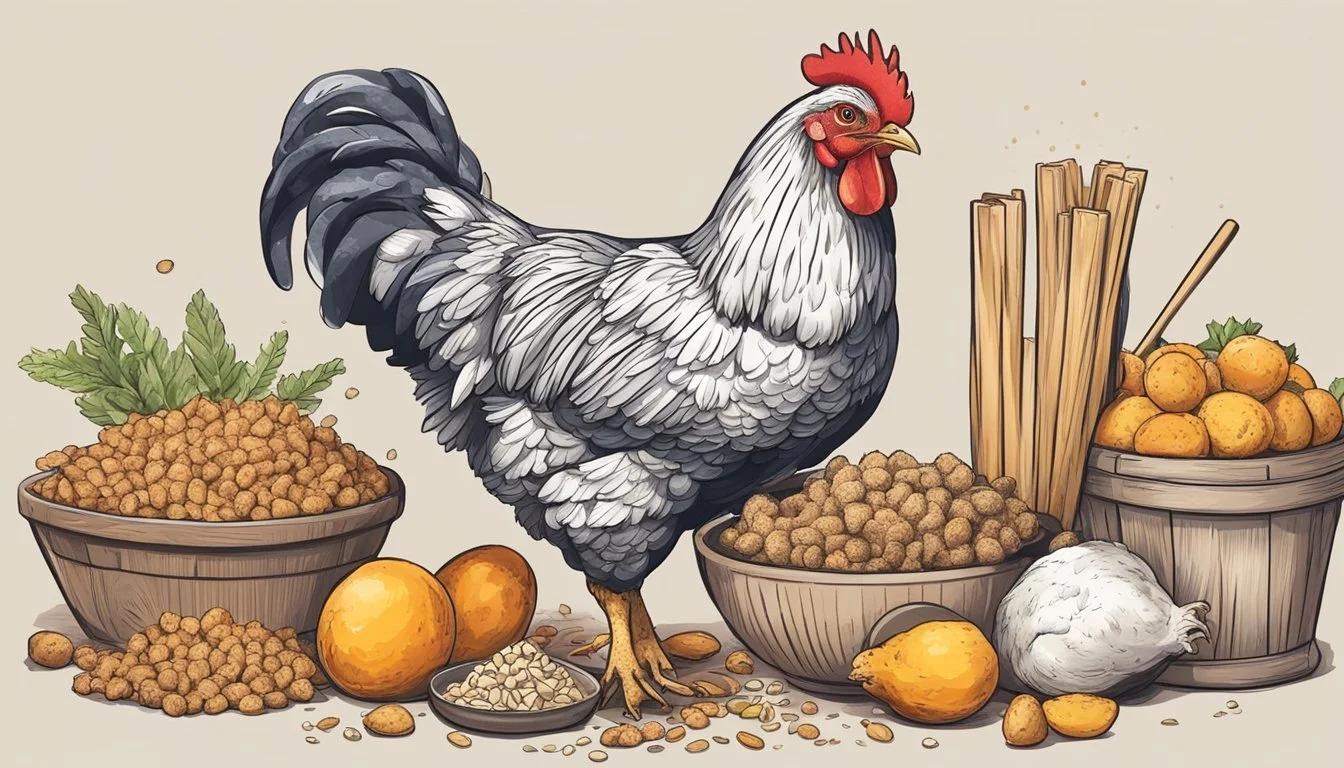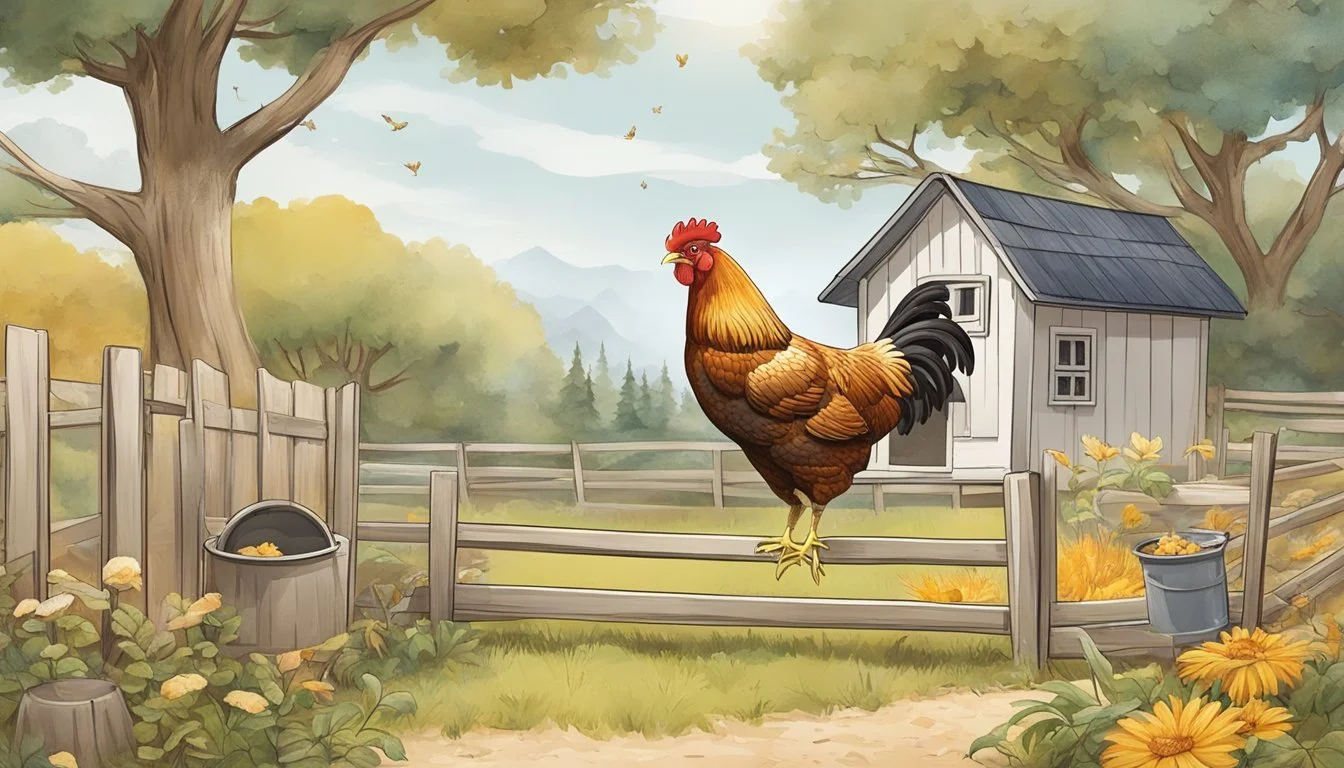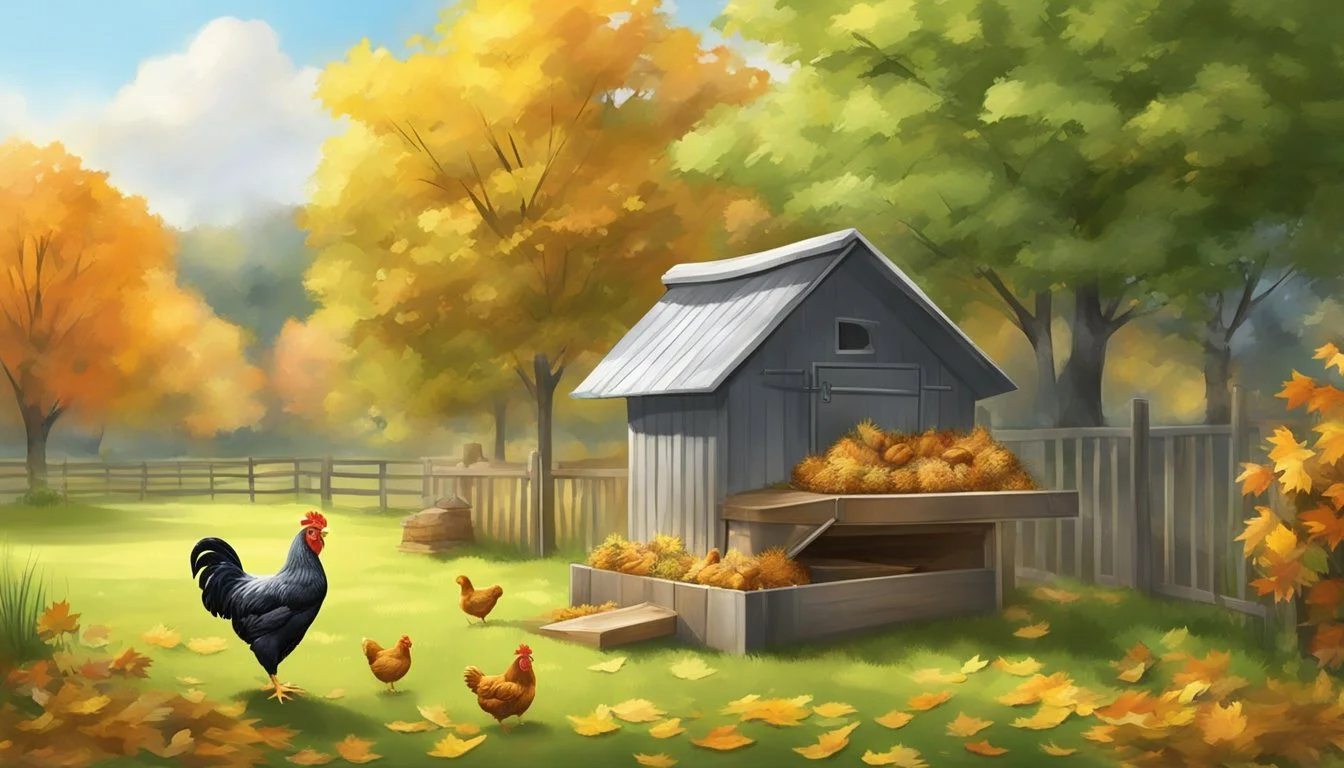How do I Manage a Chicken's Diet During Different Seasons
Seasonal Nutrition Strategies
Managing a chicken's diet throughout the various seasons is crucial to ensure their health and productivity. Chickens have different nutritional needs that change with the weather; understanding these changes is essential for any poultry keeper. During the warmer months, lighter feed that aids hydration, like vegetables and fruits, can be beneficial, while in colder seasons, more energy-dense foods are required to help them maintain body heat and egg production.
In addition to seasonal adjustments, a chicken's diet must always be balanced and rich in essential nutrients. Grains, proteins, vitamins, and minerals are staple needs for any flock. In the winter, chickens benefit from increased protein to generate body heat and compensate for the energy expended. As summer approaches, ensuring chickens have a well ventilated coop can help manage their body temperature, which is as vital as their diet.
Seasonal changes also affect egg-laying patterns and behaviors, so adjusting the diet accordingly can help maintain consistent production. For instance, reduced daylight hours in autumn and winter typically lead to a decrease in egg laying. Providing additional light and adjusting their feeding regime can help mitigate this effect. By knowing how to adapt feeding strategies to the time of year, poultry keepers can support their chickens' health and ensure their flocks thrive no matter the season.
Understanding Chicken Nutrition
Proper chicken nutrition is crucial for their health and productivity. Chickens require a ** balanced diet** that provides an array of nutrients. These nutrients include proteins, calcium, vitamins, and minerals. Protein is essential for growth, bodily functions, and egg production. A chicken's protein needs vary with its life stage, with a higher percentage required for growing chicks and laying hens. For example, layer feed typically contains 16-18% protein, whereas broiler feed requires a richer 20-24% protein content.
Calcium plays a critical role in shell formation for eggs, and a deficient diet can lead to weak shells. Supplemental sources, such as oyster shells, are often added to ensure adequate calcium intake.
Vitamins A, B12, D, E, and K are important for various bodily functions, including vision, metabolism, and bone health. Similarly, minerals like phosphorus and magnesium contribute to a robust skeletal structure and overall well-being.
Chickens also need essential amino acids, which they cannot produce themselves. These are acquired through feed ingredients like soybean meal, which is high in lysine, an important amino acid for feather growth and egg production.
Feeding schedules and content may shift with the seasons due to changes in the chickens' nutritional requirements. Adequate nutrition not only supports their day-to-day activities but also strengthens their immune system. One must provide a diet that includes a combination of grains, seeds, insects, and greens to achieve a balanced approach to nutrition.
Diet Management in Spring
Spring marks a transition period for laying hens, requiring adjustments in their diet to support egg production and overall health. As daylight increases, hens typically increase egg laying, necessitating a diet with sufficient protein and the addition of fresh greens for optimal health.
Increasing Protein for Egg Laying
During spring, the protein content in a chicken's diet becomes crucial as hens ramp up egg production. A hen's diet should include 16-18% protein to support this increased laying activity. Grains such as corn and wheat are common in poultry feed, but they might not always meet the heightened protein requirements. Therefore, farmers should consider supplementing the diet with higher-protein options like:
Meat or fish meal
Legumes (e.g., soybeans, lentils)
Dairy products (in moderation)
Introducing or increasing the amount of commercial layer feed can also ensure that hens receive the necessary nutrients. Layer feed is typically formulated to meet the nutritional needs of laying hens, and the balancing of their diet is critical from a young age to ensure quality egg production in later life stages.
Incorporating Fresh Greens
With spring comes the growth of fresh greens, which can be an excellent addition to a chicken's diet. Leafy greens are not only a source of entertainment for chickens but also provide essential vitamins and nutrients. Including a variety of greens ensures a well-rounded diet:
Spinach and kale: High in vitamins A, C, and K
Lettuce: Provides hydration and nutrients
Herbs: (such as parsley and oregano) Offer flavor and health benefits
Greens can be hung in the coop or run to encourage natural foraging behaviors. The inclusion of fresh greens in a chicken's diet supports their immune system and contributes to the vibrant yolk color of eggs. It's important to provide a diversity of greens to ensure a balance of nutrients and to remove any uneaten greens regularly to maintain a clean environment.
Feeding Practices for Summer
Managing a chicken's diet during the hot summer months requires an emphasis on hydration and a careful adjustment of feed to mitigate heat stress. It's crucial to provide access to fresh water constantly and to offer nutritionally balanced feed that accounts for decreased appetite in high temperatures.
Providing Hydration and Cool Treats
Chickens need constant access to water, which becomes even more vital during summer. Poultry keepers should ensure multiple water stations to prevent overcrowding and that water is refreshed regularly to maintain coolness. Adding ice to water can help keep it cool, and offering hydrating treats such as leafy greens and water-rich fruits like watermelon contributes to both nutrition and hydration. Frozen treats, although sparingly given, can be a refreshing snack.
Adjusting Feed for Heat Stress
During summer, chickens may experience reduced feed intake due to heat stress. The nutritional content of their diet must be adjusted accordingly. It's often recommended to feed them during cooler parts of the day, typically early morning or late evening. Poultry owners should ensure that the feed is high in quality and consider reducing the amount of grain fed, as chickens naturally eat less during warmer periods. Supplements may also be necessary to compensate for lower food consumption and to help prevent the problems associated with heat stress.
Autumn Diet Adjustments
As autumn arrives, chickens require a tailored diet to support their physiological changes, particularly during moulting, and to prepare them for cooler weather.
Preparing for Moulting
During fall, chickens begin the moulting process, shedding old feathers to grow new ones. This period demands a high-protein diet to support feather regrowth. Supplementing with feeds that have increased protein levels—ideally between 16% to 18%—helps meet their elevated nutritional needs. Introduce protein-rich treats such as mealworms or cooked eggs to ensure they have the necessary resources for moulting hens.
Transitioning to Cooler Weather Feeding
As the temperature drops in autumn, chickens expend more energy to generate body heat. Their diet should shift to include more calorie-dense grains like corn, which can help to maintain their body temperature. However, these should not replace their regular feed but rather complement it. The strategy is to provide a mix of standard feed and grains in a ratio that ensures their overall nutritional requirements are met and their calorie intake is sufficient to keep them warm.
Grains like corn can be scattered in the evenings, encouraging chickens to forage and ingest the grains last, thus metabolizing them overnight which assists in warming their bodies.
Winter Feeding Strategies
Mastering winter feeding strategies is crucial for maintaining a flock's health during the cold months. Proper nutrition combats cold stress, reinforces the immune system, and provides the necessary energy for warmth.
Addressing Cold Weather Challenges
During winter, chickens face cold stress which can lead to issues like frostbite and a reduction in laying. They require higher energy intake, as they expend more to stay warm. Insulating coops and ensuring good ventilation mitigates these challenges to some extent, but dietary adjustments provide direct support. One might consider increasing their feed consumption by around 1.5 times that of the summer months to help them maintain body heat and energy.
Key dietary factors to adjust include:
Carbohydrate and fat levels for energy.
Extra proteins to support feather growth, which acts as insulation.
Enhancing Diet for Immune and Health Support
A well-rounded winter diet bolsters a chicken's immune system, helping them to combat potential illnesses. Incorporating foods high in vitamins and proteins is essential. Here's how to enrich the winter diet:
Protein: Increase protein-rich foods to assist in feather growth and overall health. Vitamins: Fresh greens, which can be scarce during winter, supply essential nutrients. One can grow fodder or sprouts, like oats or barley, to supplement this need.
Ensuring chickens have access to clean, unfrozen water is also imperative for their health during the winter months.
Special Considerations
Managing a chicken's diet across different seasons involves tailoring their nutrition to specific needs at various stages of their life and productive cycle. Particular attention must be given to feeding baby chicks, supporting reproductive health, and addressing health issues through diet modification.
Feeding Baby Chicks
When raising backyard chickens, it's vital to start baby chicks on a nutrient-rich diet suitable for their rapid growth. A chick starter feed, which is typically higher in protein (around 18-22%), provides the essential nutrients they need for the first six weeks. During this phase, consistent access to clean water and a diet that supports their developing digestive system is crucial.
Diet for Reproductive Health
For laying hens, the diet should shift towards maintaining optimal reproductive health and supporting consistent egg laying. Calcium is a key component, often provided through supplements like oyster shell, to ensure strong eggshell formation. A balance of protein, vitamins, and minerals is also necessary to keep the hens healthy, particularly as nutrient needs rise during their peak laying period.
Addressing Health Issues Through Diet
Chickens may face a variety of health issues, which can often be managed or ameliorated through dietary adjustments. Apple cider vinegar can act as a digestive aid, contributing to a healthier gut. To counteract parasites, integrating foods like garlic or diatomaceous earth into the diet can be beneficial. Regular monitoring of chickens, including their combs and wattles, can provide early signs of health problems that dietary changes might address.
Supplementation and Treats
Proper diet management for chickens involves adding essential supplements and providing wholesome treats throughout the year. These dietary enhancements maintain health and productivity, adapting to seasonal nutritional needs.
Vitamins and Minerals Supplementation
Chickens require a range of vitamins and minerals to support their overall health and function, particularly during laying periods. For example, they need vitamin A, D, E, and B-complex vitamins, with minerals such as selenium, zinc, manganese, and others being equally essential. One can ensure these nutrients are met by providing a well-balanced layer feed, which is typically fortified with these vitamins and minerals. Alternatively, specially-formulated supplements can be added to their diet to address any deficiencies or to boost their intake during specific life stages like molting or laying.
Healthy Treats and Snacks
While the bulk of a chicken's diet should come from complete feeds, additional treats can offer variety and enrichment. High protein snacks like mealworms and sunflower seeds provide energy and help during molting when protein demand increases. However, treats should not exceed 10% of their diet to avoid nutritional imbalance. Scratch grains are another popular treat, which provides pecking enrichment but should be offered sparingly due to their lower nutritional content. Moreover, a small amount of dairy can be beneficial—the probiotics in yogurt, for instance, can aid in digestive health, but it's vital to remember that chickens are lactose intolerant, so dairy should be given in moderation. Practical use of herbs can also play a contributory role; they can be mixed with feed or treats to provide varied health benefits.
Feed Types and Feeding Schedule
Managing a chicken's diet effectively requires understanding the various types of feed available and adjusting feeding schedules according to the seasons to maintain their health and productivity.
Understanding Different Feed Types
Starter feed is crucial for chicks up to 6 weeks old, providing essential nutrients with high protein content, typically 18-20%. As chickens grow, they transition to grower feed, slightly lower in protein (around 14-18%). Layer feed contains around 16-18% protein appropriate for laying hens. In contrast, broiler feed is designed for meat chickens and has a higher protein content ranging from 20-24%.
Chickens also require a consistent supply of grit to aid in digestion, as this helps them grind down their food in the gizzard since they don't have teeth. Feed generally comes in two forms: mash and pellets. Pellets are more common as they are less messy and minimize waste.
Creating a Seasonal Feeding Schedule
Feeding schedules for chickens may vary with the seasons. During winter, the diet must be adjusted to include more carbohydrates and fats, which provide additional energy and help maintain body temperature. A recommended approach includes supplementing the regular feed with grains like corn, which acts as a source of carbohydrates.
In contrast, the summer season may require less supplementation given the natural availability of insects and greens that chickens forage, adding variety and necessary nutrients to their diet. However, ensuring a steady supply of water and balancing nutrition with complete feed is critical during this time due to the heat.
By adjusting the type and amount of feed along with the inclusion of necessary supplements like grit, chickens can be maintained in optimal health throughout the changes in seasons.
Safe Housing and Disease Prevention
Ensuring the health and safety of chickens involves a robust approach to shelter management and dietary oversight throughout the changing seasons. Coop maintenance is critical for providing a safe environment, while careful attention to nutritional needs helps prevent diet-related health issues.
Coop Maintenance and Protection from Predators
The coop is the primary defense against predators and the elements. Constant maintenance is vital for health and safety.
Walls and Fencing: They must be checked regularly for any signs of wear or damage that predators could exploit.
Roof and Flooring: Inspect for leaks or dampness, as wet bedding can foster disease and attract pests.
Locks and Latches: They should always be in working order to deter curious predators.
For ventilation, the coop should allow for ample air circulation without causing drafts, reducing respiratory risks and minimizing parasite infestation. The presence of ginger in the coop can be beneficial, as it is known for its health-promoting properties.
Preventing Dietary Health Problems
Different seasons bring diverse challenges for maintaining a balanced diet.
Summer: Provide plenty of clean water to prevent dehydration and overheating, with shade available at all times.
Winter: Increase caloric intake to help chickens maintain body heat. Adding mash high in energy can be beneficial during colder months.
All seasons: Use a mix of grains, proteins, and greens to fulfill nutritional requirements, ensuring dietary balance.
Regular inclusion of ginger in the diet may boost immune function and aid in parasite control. Good coop bedding, proper nutrition, and access to clean water are the foundations for disease prevention in chickens.
Adapting to Chicken Behavior and Physical Changes
During different seasons, chickens exhibit various behaviors and physical changes that poultry keepers must accommodate. Understanding and managing these shifts are essential for maintaining a healthy flock.
Seasonal Moulting: As daylight decreases, chickens, including breeds like the Wyandotte, may begin moulting, shedding old feathers to make way for new growth. During this time, their dietary needs increase, particularly in protein, to support feather regrowth.
Protein-Rich Diet: Incorporate high-protein feeds and supplements to support the moulting process.
Reduce Stress: Minimize handling to prevent additional stress during moulting.
Heat Regulation: Chickens regulate body heat through various physical attributes like combs and wattles. In hot weather, they require a diet that maintains hydration and avoids excessive metabolic heat.
Cool Water: Ensure constant access to cool, clean water.
Shaded Areas: Provide ample shaded space for relief from the sun.
Rooster and Hen Dynamics: Roosters play a role in flock management; during breeding seasons, their nutritional needs may shift to support activity levels. Hens, when laying, require calcium to produce strong eggshells.
Layer's Diet: Maintain a diet for laying hens that is rich in calcium.
Rooster's Rations: Adjust rooster feed to align with their increased energy expenditure during active seasons.
Cold Weather Adaptation: Chickens conserve body heat in colder months. Adequate caloric intake is crucial for maintaining body temperature.
Energy-Dense Feeds: Offer a diet higher in calories with grains and seeds.
Insulation: Ensure the coop is well insulated to minimize heat loss.
Through these nutritional and environmental adaptations, poultry keepers can foster a flock that remains hearty and vigorous throughout the seasons.
Environmental Factors Affecting Diet
Managing a chicken's diet effectively requires understanding how environmental factors such as temperature and shelter conditions influence their feeding behavior and nutritional needs.
Temperature and Climate Impact on Feeding
Chickens' feeding patterns are influenced by the ambient temperature and climate. During hot weather, they tend to eat less to reduce their internal heat production. It's crucial to adjust their diet to provide high-energy feed since they may consume less food yet need enough energy to maintain health. Conversely, in colder climates, chickens require increased caloric intake because they expend more energy to keep warm. Therefore, a diet richer in energy-dense grains may be beneficial when cold temperatures prevail to offset the energy used in heat production.
Securing the Coop Against Weather Extremes
The structural integrity of the chicken coop is vital in protecting the flock from weather extremes. To prevent harmful drafts, cracks and gaps in the coop should be identified and sealed, yet, it's important to maintain appropriate ventilation to clear out dampness and ammonia. During the winter, insulation can be bolstered to aid in maintaining a consistent internal temperature, reducing the chickens' metabolic demand to generate body heat. In summer, ensuring ample shelter and shade can protect chickens from overheating, and supplemental water sources can help manage their hydration and body temperature.


